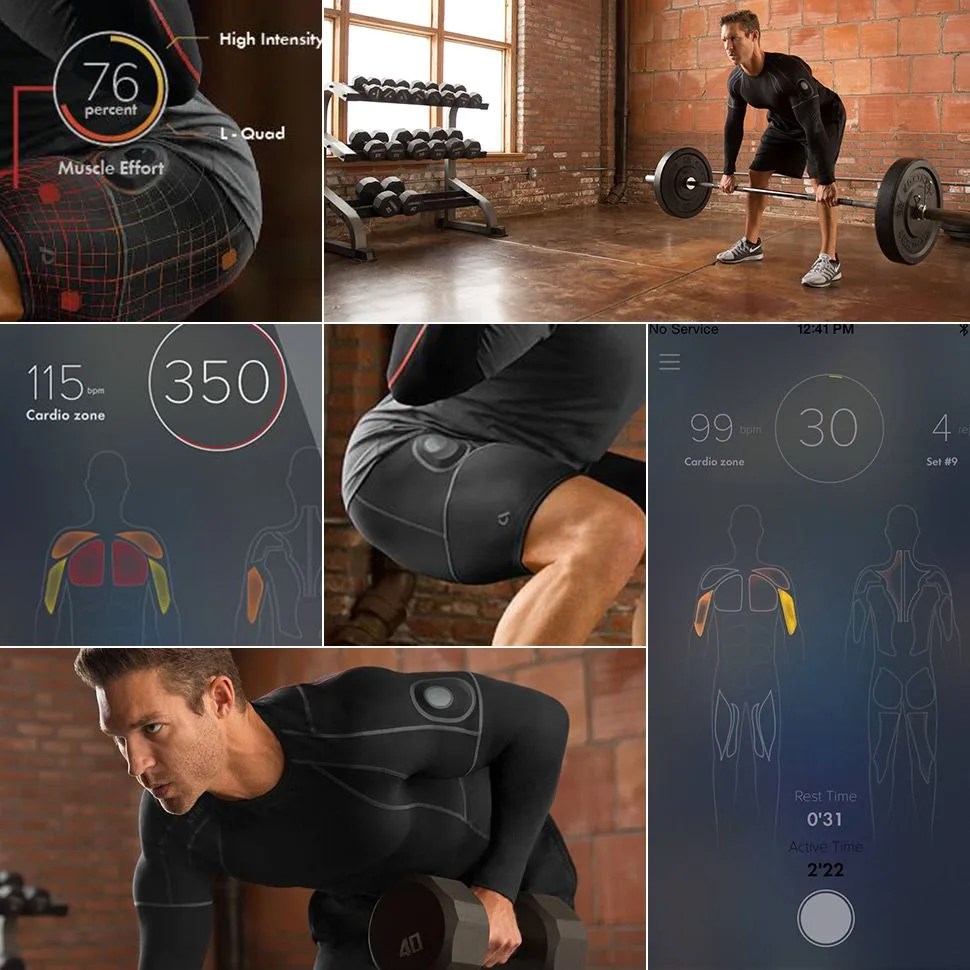8 p.m. The gym. I picked up a medicine ball, stepped onto a balance trainer and squatted down into the first of 10 reps, holding for 10 seconds at the bottom. I’ve been working on a Bosu every other day as part of my physical therapy to build strength around a torn posterior cruciate ligament in my left knee, and I have a hard time focusing on distributing my weight evenly, especially early in the morning or late at night. But this workout was slightly different. Instead of sweats I was wearing compression shorts lined with eight electromyograpy, or EMG, sensors; instead of a mirror, I was staring into an iPhone screen giving me real-time visual feedback on which muscles were firing and how hard they were working; and instead of my physical therapist, Dhananja Jayalath, a hardware engineer, was telling me to engage my hamstrings and stop favoring my left leg.
MORE WEARABLES: Tested: Misfit Shine | Introducing the iBuckle, A Really Sweet Belt | A Case for the Traditional Watch
Jayalath has no background in personal training. Furthermore, he wasn’t actually looking at my form: he was looking at data — data streaming from my shorts. Jayalath is the CEO and co-founder of Athos (prounounced ah-thos), a startup that’s just a few months away from bringing to market compression clothing capable of monitoring how hard your muscles are working — on top of heart rate, heart rate variability and breathing patterns. The project started when he and co-founder Chris Wiebe were still in college studying electrical engineering at the University of Waterloo.
“Chris and I got tired of spending time at the gym and not knowing if we were getting the most bang from the buck”, Jayalath said. “How can we optimize, get more out of the time and know if our form is correct?”
They wanted the insights of a personal trainer without having to shell out $60 per hour. After several years of work on a prototype, a round of funding from Social+Capital Partnership (and another very recently led by DCM), and after adding a handful of engineers, designers and a neuroscientist to their team, their solution is about to hit the market. The product Athos offers is a pair of shorts (shipping November 2014) and a shirt (thereafter) equipped with a total of 22 EMG (14 in the shirt, eight in the shorts) sensors, four heart rate sensors (two each) and two breathing sensors (just the shirt).
From the outside, the warp-knit garments look, feel and behave like other high-end compression apparel: they have flat seam construction, four-way stretch, moisture-wicking properties, UPF 50 treatment and they’re machine washable. The only noticeable difference is a small docking station on the outer thigh of the shorts and the upper arm of the shirt, where the “Core” clips in. The Core is the so-called “brain of the system”, a 2.5-inch-long, 20-gram, ellipse-shaped wireless device complete with the hardware and software to collect biosignals and send them via Bluetooth to your phone, where they’re crunched and presented visually.
Athos apparel has all the same core functionality of these other wearable biosensors in addition to its use of EMG — the collection and evaluation of electrical activity produced by the muscles — which is a very big difference indeed.
